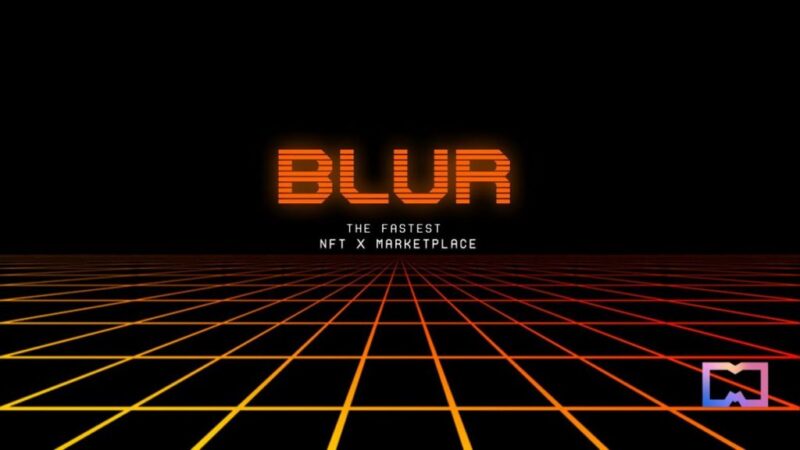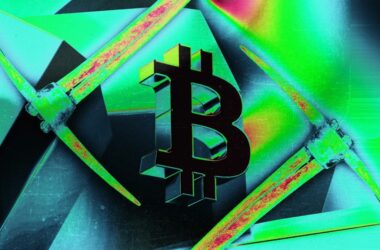With the NFT market undergoing a noticeable downturn, some fingers have started pointing at Blur, a marketplace that rivals OpenSea and targets experienced traders. Amid growing concerns over this protracted slump in NFT prices, the founder of Blur has stepped up to defend the market dynamics.
Tieshun Roquerre, who goes by the pseudonym Pacman, took to Twitter in response to the ongoing discussion surrounding Blur’s potential role in the market decline.
Since Blur’s inception in October 22, Pacman highlighted that the floor prices of various NFT collections have experienced both upward and downward movement. He noted that Blur’s launch brought about increased liquidity to NFTs, largely thanks to their airdrop, which resulted in an uplift in floor prices. Conversely, with the Azuki mint causing $40 million worth of liquidity removal, floor prices naturally decreased. Pacman emphasized that liquidity stands as the principal determinant of market movement.
The NFT market has been witnessing a year-long downturn, a stark contrast to the skyrocketing prices seen back in 2021. This decline has affected even the most esteemed collections. Data from NFT Price Floor reveals that the floor price of Yuga Labs’ Bored Ape Yacht Club plummeted to 28 ETH (approximately $53,000), marking an 18-month low, and less than half of its value at the start of the year. Additionally, the Azuki collection also saw its floor price nosedive following the botched launch of a new set of NFTs by its creator, Chiru Labs.
Blur Founder
The decline in the NFT market has led to the Paradigm-backed marketplace, Blur, being criticized. Lior Messika, whose venture firm Eden Block is an investor in Yuga Labs, claimed that NFT whales, previously identifying as “collectors,” are now labeling themselves as traders or “Blur farmers“. Messika argues that this shift in behavior has distorted the space. Additionally, Brad Kay attributed a significant portion of the Azuki sell-off to Blur’s lending platform.
However, these claims are countered by Blur’s founder’s explanation, emphasizing liquidity’s role in determining market movement. As the debate continues, it is clear that understanding the complexities of the NFT market and its driving factors is essential for any investor in the space.
The ongoing slump in the NFT market has brought about many debates, with different platforms being scrutinized, particularly Blur, a new entrant and potential rival to OpenSea. However, as an expert in cryptocurrencies and the author of this analysis, I believe it’s essential to take a nuanced view of these events and consider the broader trends influencing the market.
Understanding the Downturn
The NFT market has always been volatile, with high potential for significant returns and risks. While it’s tempting to attribute this recent downturn to the actions of specific platforms or individuals, it’s important to remember that markets move based on a multitude of factors. Liquidity, as highlighted by Blur’s founder, Pacman, is indeed a critical component influencing price movement in the NFT space. The introduction or removal of significant liquidity can trigger drastic price shifts, a phenomenon we’re observing in the current scenario.
Although Blur is blamed for the downturn, we must remember that new platforms can cause change and disruption. This disruption isn’t necessarily detrimental; it’s merely reflective of an evolving market. The transition from collectors to traders or Blur farmers may signal market maturity. It suggests that participants are seeking more sophisticated methods to profit from the NFT space.
Future Projections: A Maturing Market
Looking ahead, I predict further maturity of the NFT market. It may involve sophisticated trading strategies. Also, robust risk management practices could come into play. There might be regulatory interventions for stability and security. Moreover, continuous innovation in NFT space may occur. This could lead to the development of new platforms. They may cater to different user segments, diversifying the market.
The downturn can be a lesson for NFT investors. It highlights the importance of resilience and diversification. Strategic decision-making is also crucial in facing market volatility. As the saying goes, it’s not about market timing. Instead, it’s about spending time in the market. The NFT space is going through growing pains. Thus, it is crucial to understand and adapt to inherent risks and rewards.
In conclusion, the NFT market’s current slump concerns many. However, it may be a natural phase in a rapidly evolving space. My advice to investors is to stay informed. They should adapt to market changes. Most importantly, they should invest responsibly.
Read more related articles:
Source: mPost





